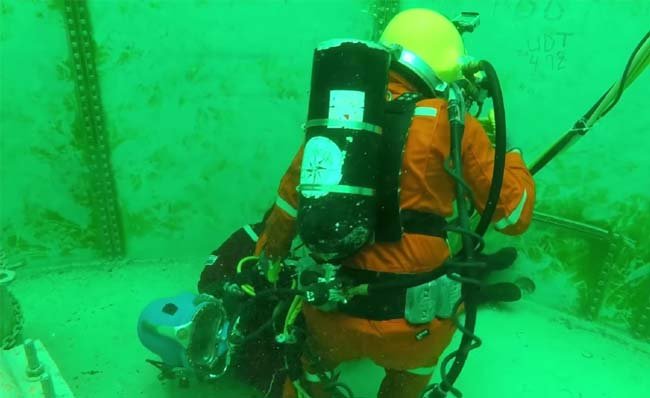Common people might be amazed when looking at the underwater welders. While it is true that they are amazing, their job is dangerous and full of challenges. This profession requires workers to weld and maintain structures beneath the surface of the water, usually in extreme conditions. For these workers, their job is best because it offers a combination of welding expertise, marine adventure, and a unique set of challenges. Besides, it is also counted as one of the highest paid jobs in the world. Apparently, someone who works as an underwater welder can collect an average salary of up to $100,000-$200,000 every year.

While the money might make everyone wants to get this job, they should be aware that it comes with risk of fatalities and accidents. For those who are not familiar with this job, you will be able to find the explanation about the death rate among underwater welders and some other things related to underwater welders.
Death Rate of Underwater Welders
The death rate of the underwater welders is included in the list of the highest in the world. As stated before, an underwater welder is one of the most dangerous jobs in the world. The death rate of underwater welders is higher compared to the average worker. The statistics show that it is about 15%, making it the highest death rate of any occupation. The other occupations that are known to be extremely risk, such as fishers and loggers, have fatality rates of only less than 0.2%.
According to the data regarding the commercial diver death rates from 1989 to 1997 shared by the Center for Disease Control and Prevention or CDC, there was an average of 5 deaths every year in the period. According to the statistics shred by the Occupational Safety and Health Administration (OSHA), an average of 6 to 13 diving-related deaths occurred every year. As for the recent statistics regarding the number of underwater welding accidents that happen in the United States every year, they are nowhere to be found. It is safe to say that the latest regulations and safety procedures in this field are still lacking. It is such a shame because the number should be updated and the standards should be revised to ensure the proper safety measures in the workplace.
There are several factors that make the death rate of underwater welders is high, including:
- The chance of the workers to get drowned is high.
- The high-voltage electrical equipment that are involved while working can cause serious injuries or even death if these workers make contact with live wires.
- The workers can suffer from explosive decompression or the sudden loss of pressure that causes the lungs to collapse.
- These workers can get physical and mental stress.
- The standardized training and certification are still lacking. That’s why many of them enter the field without preparation.
- The conditions underwater can be extreme, especially high pressure and low visibility, resulting in weaknesses that lead to accidents.
Risks of Being an Underwater Welder
Becoming an underwater welder is not easy due to the risks. These risks are also some of the common reasons for underwater welding deaths, such as:
1. Decompression sickness
If the underwater welders dive too fast between pressure zones, harmful gases can be inhaled. The situation can get worse if they inhale too much of them.
2. Drowning
Drowning can happen to anyone, including to the most experienced underwater welders with the most advanced equipment. The pressures underwater are different and sometimes they are hard to detect. That’s why these professionals face some issues. It will be hard for them to escape a situation where they are trapped in the flow. Aside from the pressure, drowning can also happen due to poorly-maintained or old gear. Plus, these professionals can also get entangled or pinned by the equipment used by them as the visibility drops when they are underwater.
3. Hypothermia
Human bodies who are alive are warm. However, when they are underwater, the heat can be taken due to cold temperatures. As an underwater wielder usually has to be underwater for a long period of time, they might get metabolic issues. If it is fatal, they can even get organ failure. To protect these professionals, a properly insulated rubber wetsuit should be worn.
4. Explosions and fires
Numerous gas pocket can be formed when hydrogen and oxygen are combined underwater. The combination can explode and result in severe injuries or death.
5. Marine wildlife
Wildlife can also be found underwater. The creatures that live underwater include sharks or other potentially deadly creatures. While working, underwater wielders can encounter these things and they can get injured or lose live due to their attack.
6. Electrocution or electric shock
A thing known as electrocution or suffering from electric shock often occurs especially in the situation when welding equipment does not fit to be used underwater is used. The incident can be fatal. To avoid the fatality, all the workpiece must be waterproof and properly insulated.
Conclusion
In conclusion, underwater welding is a job full of challenges and risks. It is one of the jobs with high death rate. Fortunately, the number can be reduced as long as the workers get proper training, follow safety measures and regulation, and are committed to continuous improvement. To work as an underwater wielder with minimum risk, make sure to understand the risks beforehand.

A bookworm and researcher especially related to law and citizenship education. I spend time every day in front of the internet and the campus library.





